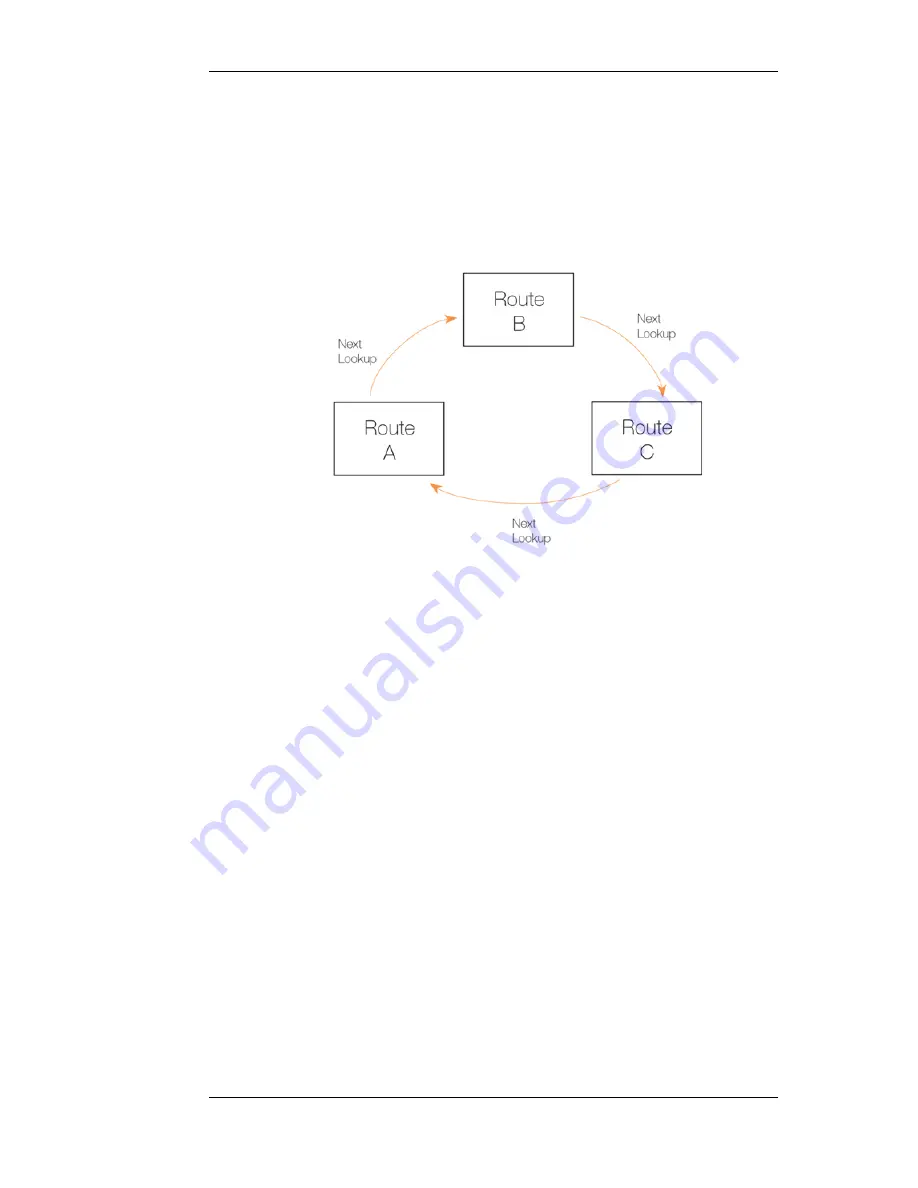
done according to which algorithm is selected in the table's RLB Instance object:
•
Round Robin
Successive routes are chosen from the matching routes in a "round robin" fashion provided
that the metric of the routes is the same. This results in route lookups being spread evenly
across matching routes with same metric. If the matching routes have unequal metrics then
routes with lower metrics are selected more often and in proportion to the relative values of
all metrics (this is explained further below).
Figure 4.5. The RLB Round Robin Algorithm
•
Destination
This is similar to Round Robin but provides "stickiness" so that unique destination IP
addresses always get the same route from a lookup. The importance of this is that it means
that a particular destination application can see all traffic coming from the same source IP
address.
•
Spillover
Spillover is not similar to the previous algorithms. With spillover, the first matching route's
interface is repeatedly used until the Spillover Limits of that route's interface are
continuously exceeded for the Hold Timer number of seconds.
Once this happens, the next matching route is then chosen. The Spillover Limits for an
interface are set in the RLB Algorithm Settings along with the Hold Timer number of
seconds (the default is 30 seconds) for the interface.
When the traffic passing through the original route's interface falls below the Spillover
Limits continuously for the Hold Timer number of seconds, route lookups will then revert
back to the original route and its associated interface.
4.4. Route Load Balancing
Chapter 4. Routing
171
Summary of Contents for NetDefend DFL-260E
Page 27: ...1 3 NetDefendOS State Engine Packet Flow Chapter 1 NetDefendOS Overview 27...
Page 79: ...2 7 3 Restore to Factory Defaults Chapter 2 Management and Maintenance 79...
Page 146: ...3 9 DNS Chapter 3 Fundamentals 146...
Page 227: ...4 7 5 Advanced Settings for Transparent Mode Chapter 4 Routing 227...
Page 241: ...5 4 IP Pools Chapter 5 DHCP Services 241...
Page 339: ...6 7 Blacklisting Hosts and Networks Chapter 6 Security Mechanisms 339...
Page 360: ...7 4 7 SAT and FwdFast Rules Chapter 7 Address Translation 360...
Page 382: ...8 3 Customizing HTML Pages Chapter 8 User Authentication 382...
Page 386: ...The TLS ALG 9 1 5 The TLS Alternative for VPN Chapter 9 VPN 386...
Page 439: ...Figure 9 3 PPTP Client Usage 9 5 4 PPTP L2TP Clients Chapter 9 VPN 439...
Page 450: ...9 7 6 Specific Symptoms Chapter 9 VPN 450...
Page 488: ...10 4 6 Setting Up SLB_SAT Rules Chapter 10 Traffic Management 488...
Page 503: ...11 6 HA Advanced Settings Chapter 11 High Availability 503...
Page 510: ...12 3 5 Limitations Chapter 12 ZoneDefense 510...
Page 533: ...13 9 Miscellaneous Settings Chapter 13 Advanced Settings 533...













































